Carried away by globalization. SOUTH AFRICA.
Mysterious devices that had vanished about a hundred years ago with the will of incomprehensible circumstances.
The topic of today's article will be the Republic of South Africa. This country rarely flashes in the news, although it is a member of the G20, BRICS and is the most developed on the entire African continent. And what we know about it, except this and the half-forgotten Apartheid? Very little. It is known that the first of Europeans to these lands came in the 15th century, the Dutch and founded there the Cape colony. This colony prospered well until the end of the 18th century, when, as a result of one of the wars, it did not pass under the control of the British Empire. During the planting of the new government by the British administration, the Dutch colonialists migrated north and east of the Cape province, and established two states there, the Transvaal and the Orange Republic. The problems of these states began in the late 19th century, when large deposits of diamonds and gold were discovered on these territories. To capture these riches, the British first used, as they say now, soft power, and then undertook several Anglo-Boer wars, the last of which was completed in the 20th century and ended with the victory of the British Empire. From that time until 1961, the united country was dependent on Great Britain in various forms, then it became an independent republic. If in brief, then about this history has this state. But when you look at old photos of South Africa, involuntarily begin to overcome thoughts.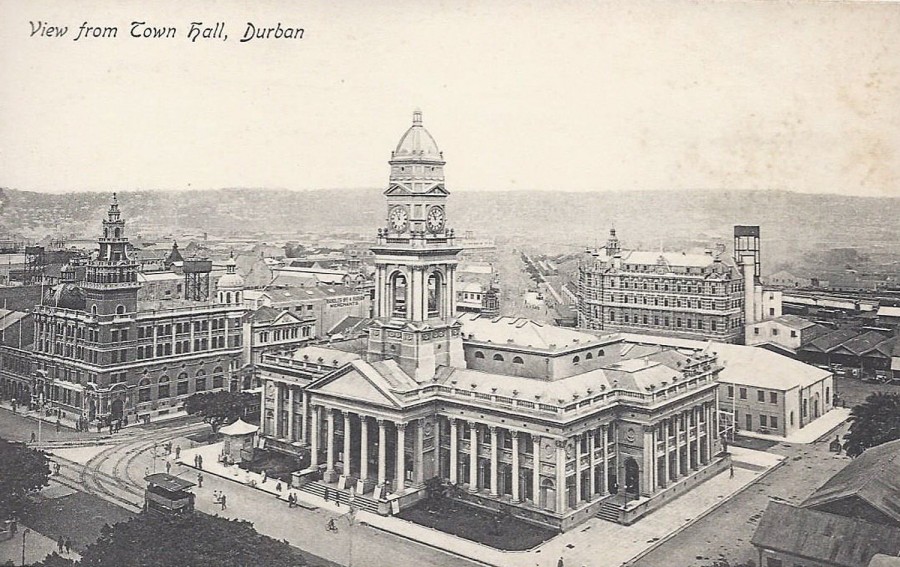
This is Durban, the third largest city in the country after Cape Town and Johannesburg, in 1910. Did all these buildings have been built by Dutch farmers who lived separately in their own land, as history tells us? And oddly enough, everywhere there is a single classical style in architecture, and if there were no inscription on the photo, one would think that it was some Paris and others like him. In other large cities of the country the picture is about the same. If it is banal to calculate the amount of construction materials spent on construction and compare the number of people living on those lands (Africans do not count), it can be easily proved that both the Dutch and the British have nothing to do with these buildings. Most likely, these buildings were found abandoned in approximately the same way as Peter found St. Petersburg, and just restored, and it was not until the 18th century. And what was there before? History is silent, however, on all lands, with the exception of the Eurasian continent. But we will not be distracted and go further.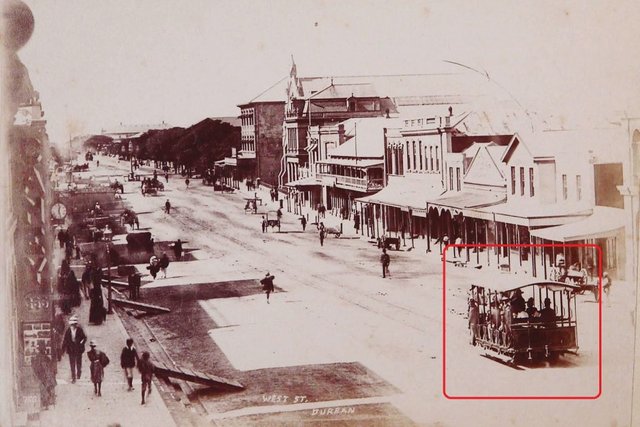
This is also Durban in 1898, and then oops .. a tram without wires. About the same as here, only on another continent. Maybe the angle is unsuccessful and you can not see the horses?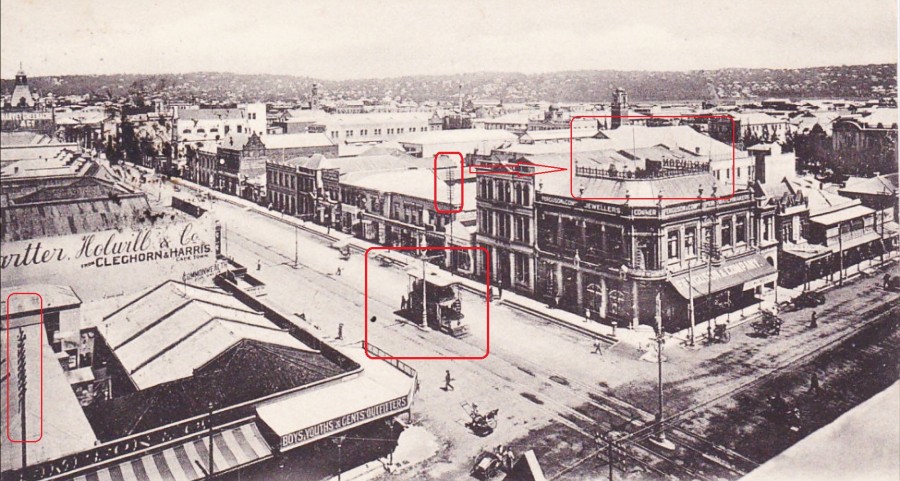
However, no, the tram is really without wires. And the street is the same, but only in 1891. If you look closely, then in the background we see a pillar without wires, which looks not along the road, as usual, but on the house opposite, or rather, on its roof. And on the roof of this house there is an energy installation, considered earlier in many articles. This is the case when the line of columns without wires starts. In the left corner you can see the same column, only in the profile. It is directed to some other side. Obviously, there were many buildings with such roofs.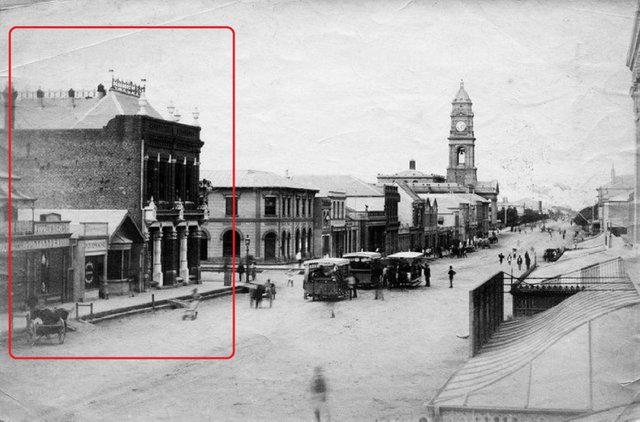
I'll venture to assume that the circled building in this photo is the same as in the previous photo, only done from a different angle and older than a minimum of ten years. And strangely enough, wireless trams crowd this street with piles. Transvaal (my country - singing in a song) is also a country of wireless trams. Judging by the building with the clock in the background, you can reconstruct this place.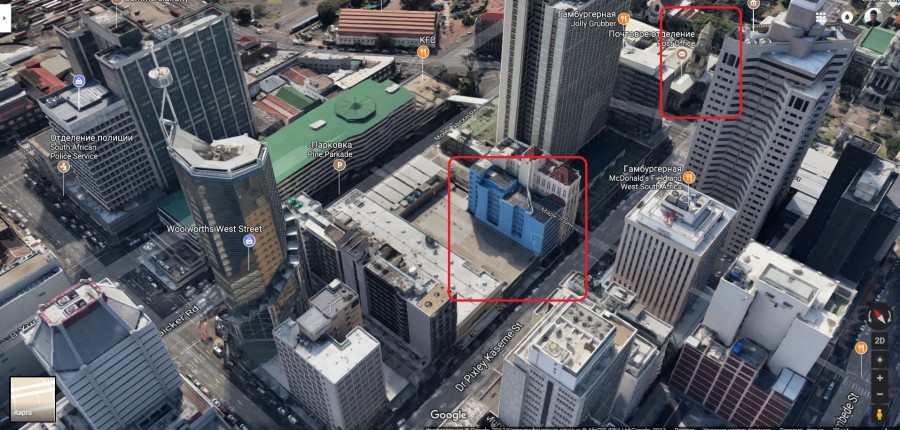
Actually, only this building and it turned out. The rest is completely changed, not a single old house with a photo in any form is left.
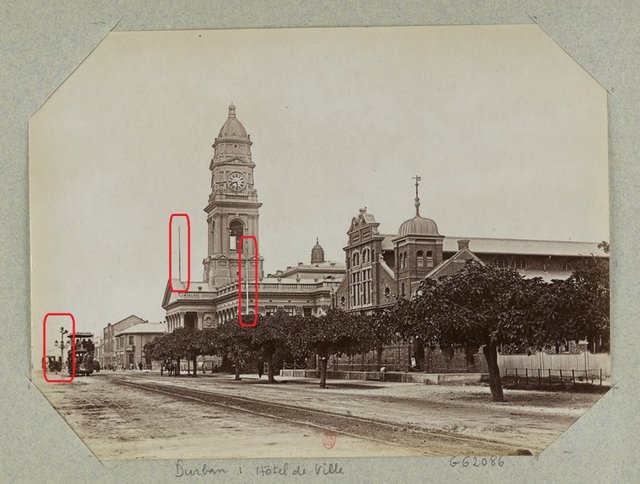
Another photo from the same street, only two blocks closer to the sea. Apparently, behind the tram there is a column on which there are objects similar to sports cups, which were considered in previous articles. And on buildings (and not only) again we see simplified wireless poles, this is basically the same poles, but instead of traverses there was a single cup set on a regular pole. The same designs are very well documented here. Most likely, the capacity of the sources was sufficient to avoid polishing the poles with large bars.
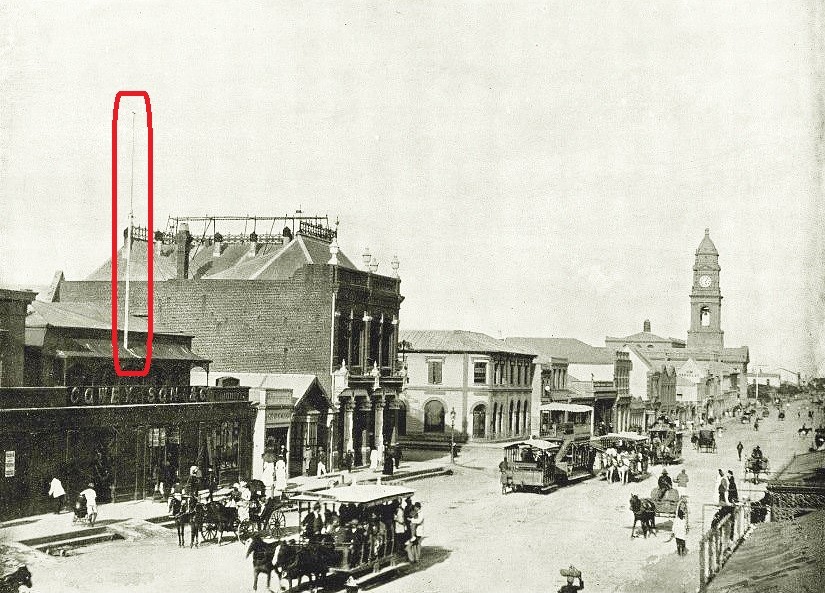
And this is actually again a photo of the same street, only in 1860. As they say, feel the difference. Trams still run on horses, but the pole with the cup is already standing, and the height of the cup is again held at the height of the roof with an energy installation. The trend, however. But the conclusion can be drawn - trams on an incomprehensible electric traction appeared clearly not earlier than three decades from the end of the 19th century. And when did the posts appear without wires, albeit simplified?
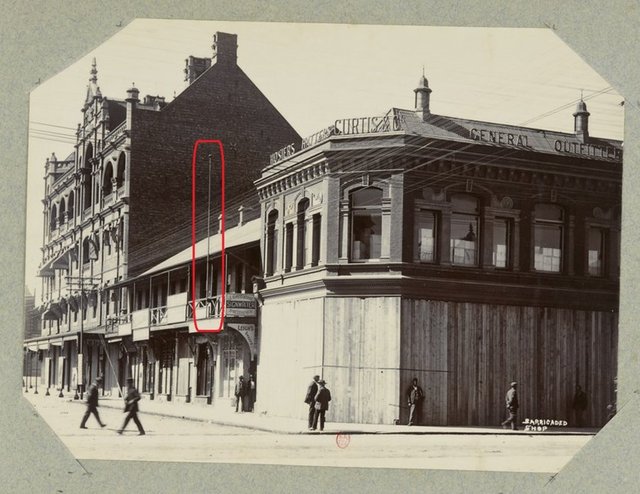
The same technology is applied in Johannesburg.
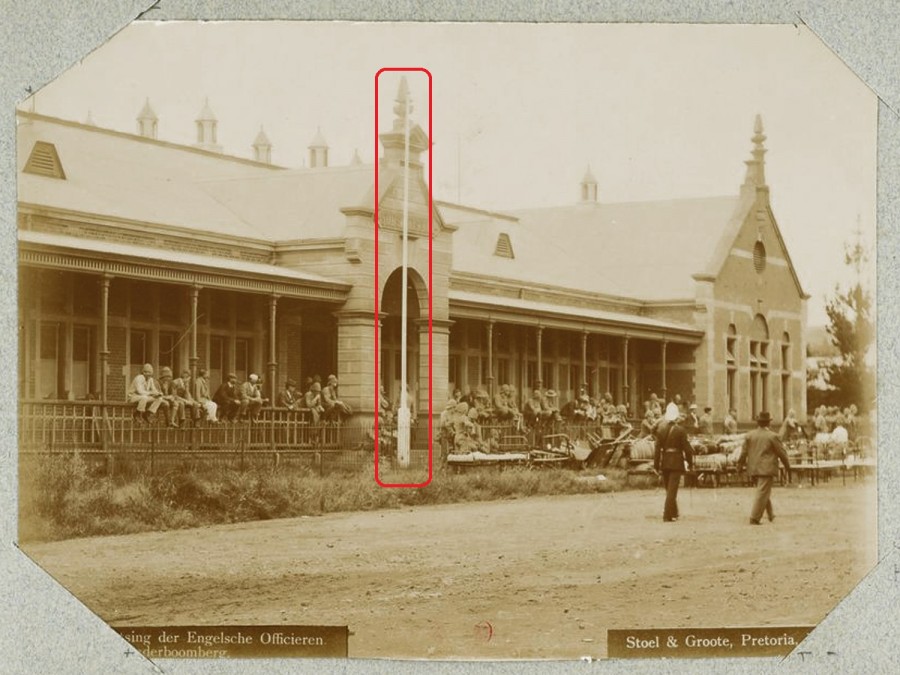
And in Pretoria, and the pole does not even stand on the building and above the ground has no visible connections with the porch's designs. It seems that somewhere on the porch stood the receivers of the field, with which this pole was connected. This technology, apparently, was distributed around the world, the first photos, which recorded it, are dated 1850 years.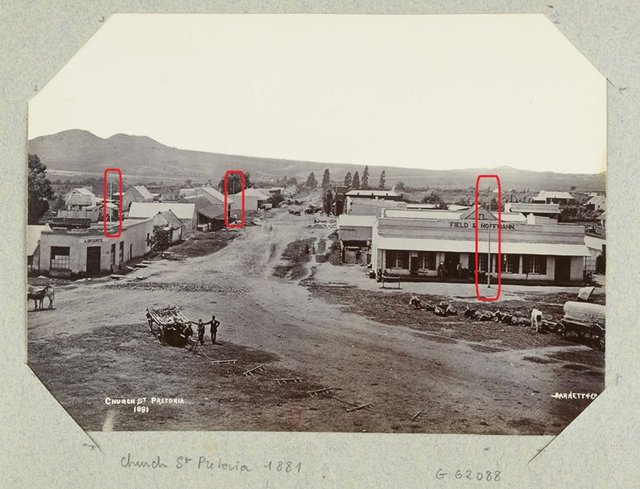
And this is Pretoria in 1881. It's only just beginning. Apparently, neither the flag nor the Motherland, but the poles are already standing.
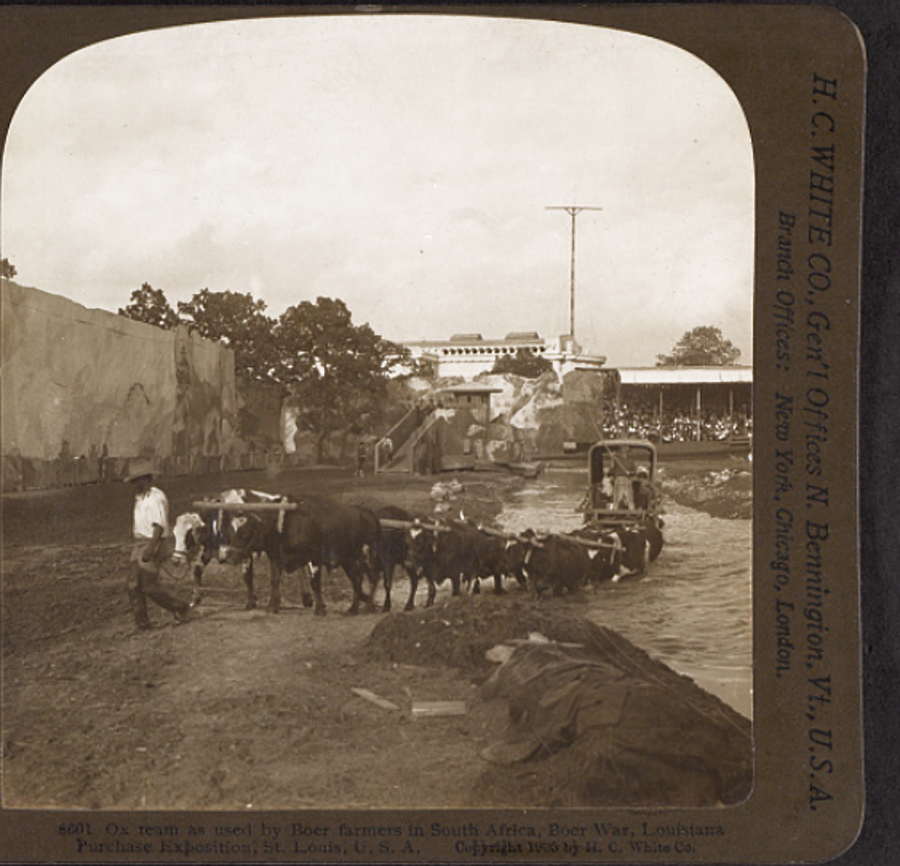
This technology in the early 20th century was used even by South African farmers. And not only they.
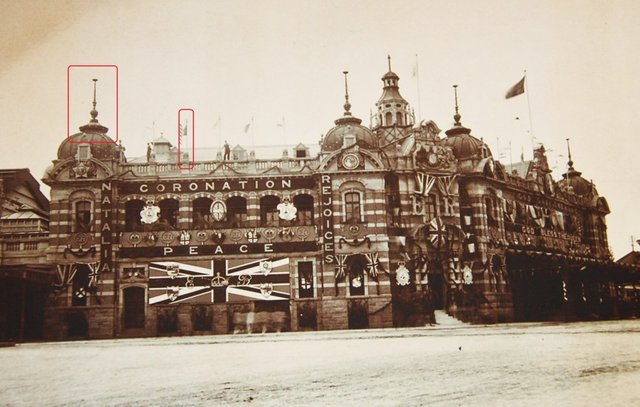
This is the railway station in Cape Town, in the early 20th century. If it were not for the annotation to the photos and the banners with the British flag, I would have thought that this is the Palace of Electricity from the Worldwide Parisian Universal Exhibition - the architectural style is similar to that. Apparently, the engineering systems of this and that buildings worked on the same principle.
This is the Republic Palace in Pretoria around the same time. Absolutely everything is the same on the roof. Actually, private houses also did not lag behind.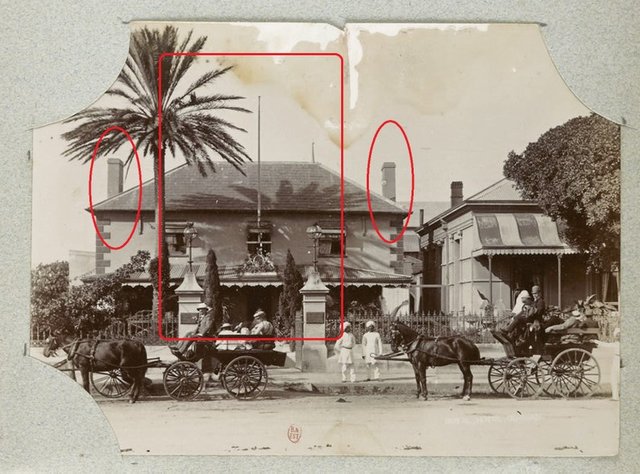
It is a rich private house in Johannesburg. Pay attention to its porch, and the lanterns at the entrance. They are uniquely linked. I wonder why in Africa there are two chimneys on one house? What is cold in there is hard to believe.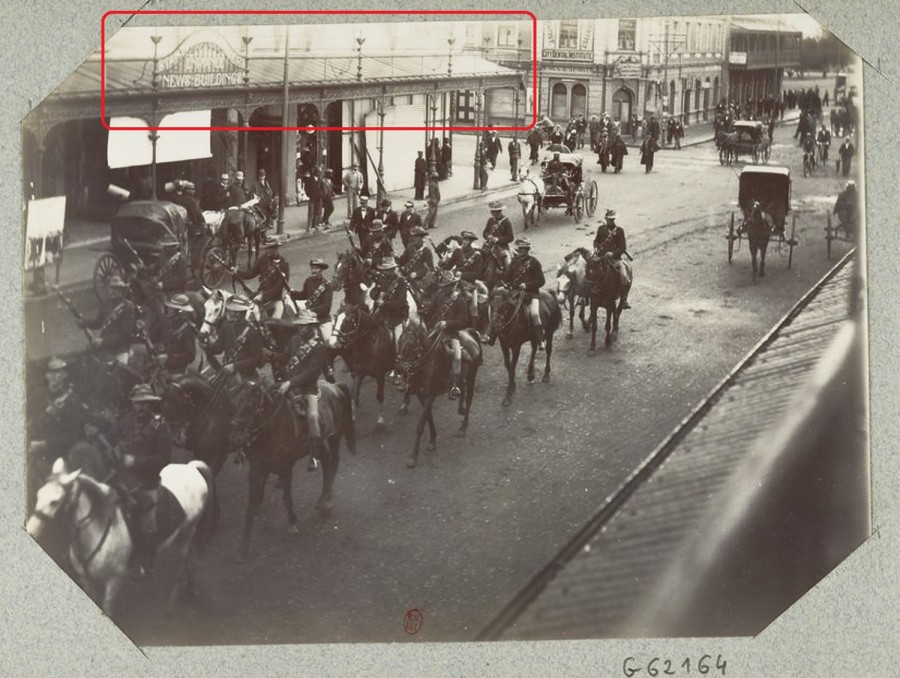
And here the people are speaking in the Anglo-Boer War. Very strange columns stand on the porch of the building in the distance, and on two of them the luminous advertisement is fixed.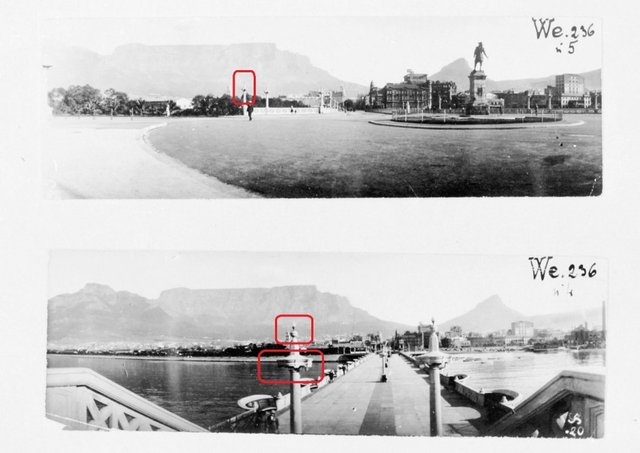
Very interesting lighting devices are located on the waterfront of Cape Town. Bottom of the lamp itself, and on top of us are familiar mini-domes.
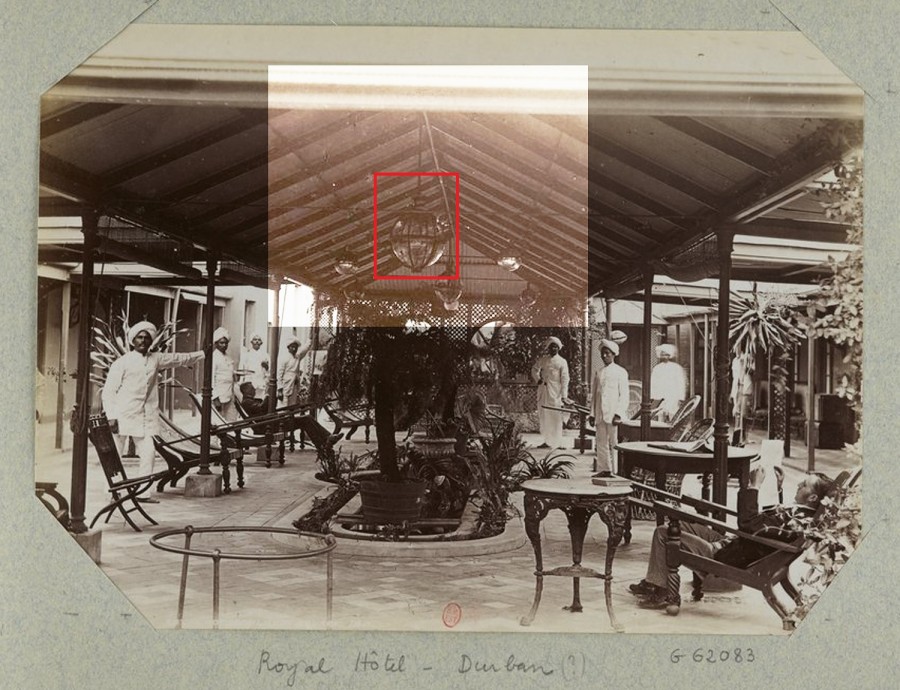
And these lighting devices do not lend themselves to criticism at all.
As you can see, even in a little-known South Africa many secrets of industrial grandeur of the past centuries are buried. How they got there is an interesting question, probably with those people who built buildings there in the classical style, and indeed all over the world too.
Very interesting post! Thank you for the information. My husband is from SA and most of his family is still there.
Downvoting a post can decrease pending rewards and make it less visible. Common reasons:
Submit
You’re welcome=))
Downvoting a post can decrease pending rewards and make it less visible. Common reasons:
Submit
Hi. I am @greetbot - a bot that uses AI to look for newbies who write good content.

I found your post and decided to help you get noticed.
I will pay a resteeming service to resteem your post,
and I'll give you my stamp of automatic approval!
Downvoting a post can decrease pending rewards and make it less visible. Common reasons:
Submit
Resteemed by @resteembot! Good Luck!
The resteem was payed by @greetbot
Curious?
The @resteembot's introduction post
Get more from @resteembot with the #resteembotsentme initiative
Check out the great posts I already resteemed.
Downvoting a post can decrease pending rewards and make it less visible. Common reasons:
Submit